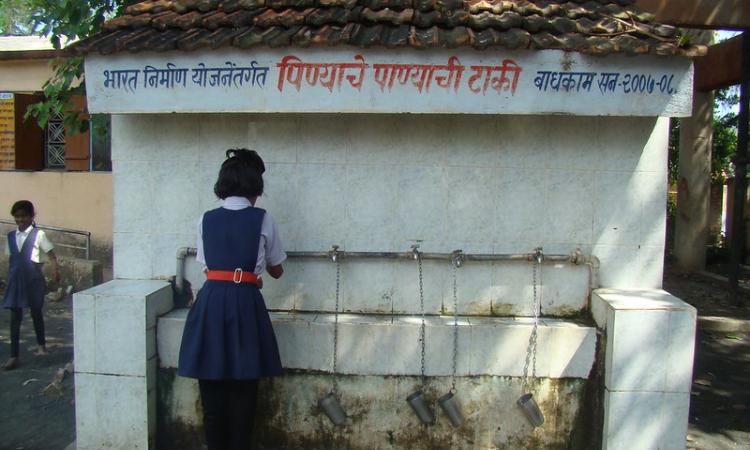
Several large states have low coverage of JJM in rural households: Panel expresses displeasure
A Parliamentary standing committee has expressed concern over the under-utilisation of funds for the Jal Jeevan Mission (JJM). States like Uttar Pradesh, Chhattisgarh, Jharkhand, West Bengal, Rajasthan, Assam, Madhya Pradesh, Kerala and Tamil Nadu provide less than 40 percent of FHTCs to their households, according to the report tabled in Lok Sabha by the Standing Committee on Water Resources.
The report noted that the actual expenditure incurred during fiscal year 2021-22 was only Rs 28,238 crore, while the budget allocated was Rs 45,011 crore.
However, the panel appreciated states and Union Territories like Haryana, Telangana, Goa, Andaman and Nicobar Islands, Dadra and Nagar Haveli, and Puducherry for achieving 100 percent target of providing tap water connections to households, while states like Punjab, Himachal Pradesh and Gujarat have achieved more than 90 percent household coverage. (The Indian Express)
Groundwater exploitation leads to drying up of borewells along the Narmada banks
Borewells near the Narmada river are drying up due to the exploitation of groundwater that has increased in 2020 as compared to 2017.
According to river expert and geologist KG Vyas, the problem of borewells drying can be attributed to the drying up of the river. Despite being the seventh largest river in the country, the Narmada is drying up due to lack of water in its tributaries. Dudhi, Tawa, the tributaries of the Narmada, are on the verge of extinction due to unscientific mining.
The Ground Water Yearbook 2020-21, which was prepared using ten years of data from 2010 to 2019, indicates that groundwater levels have declined in 25.80 percent of wells in Madhya Pradesh and have dropped by 63.24 percent over these ten years. Also, the groundwater of a large part of the Narmada basin is getting polluted by chemical farming and industries. (Mongabay India)
Floods in Subarnarekha river remain a cause of concern
In Odisha, flash floods during the monsoon season destroy property and kill people. In spite of the crisis, there are no flood control measures in place in Subarnarekha river, which flows through Odisha, West Bengal, and Jharkhand.
Lack of coordination between the states has delayed the construction of the Ichha dam over the Kharkhai river and common canals.
A tripartite agreement for flood control and large-scale irrigation was signed in 1978 by Odisha, West Bengal, and erstwhile Bihar. Despite several meetings, Odisha and Jharkhand are yet to reach a consensus on the issue of cost sharing. Both the Iccha dam and Chandli dam over Subarnarekha are facing issues of cost sharing and rehabilitation and resettlement. (The New Indian Express)
Karichal lake in Kerala filled with plastic deposits, says survey
During the survey to document the flora and fauna of the lake area, it was discovered that the Karachi lake has become a dump yard for plastic waste. A survey conducted by the Kerala state biodiversity board and the Kottukal panchayat biodiversity conservation committee found huge deposits of plastic waste in the bottom of the lake, which led to the decline of green chromide fish.
The plastic deposit in the lake degrades the water quality and prevents fish from laying their eggs, therefore causing a decline in fish numbers, which in turn impacts the livelihood of the fishing community of Ambalathumoola.
Following the survey, the state biodiversity board has decided to implement a project to revive the ecosystem of the lake and plans to take strict action against people dumping waste in the lake. (The Times of India)
Environment Ministry designates October 5 as the National Dolphin Day
The Environment Ministry designates October 5 each year as National Dolphin Day to generate awareness and community participation, which are essential for the conservation of dolphins. The decision to designate a National Dolphin Day was taken by the standing committee of the National Board for Wildlife (NBWL). Since dolphins serve as an ecological indicator of a healthy aquatic ecosystem, the environment ministry has taken several steps to protect and conserve dolphins and their habitats.
According to Neha Sinha, conservation biologist and author, “A Day is a good step but the real work will be in letting rivers flow with clean water and saying no to projects that break up rivers”.
(Hindustan Times)
This is a roundup of important news published from March 23 – April 4, 2022. Also read policy matters this fortnight.